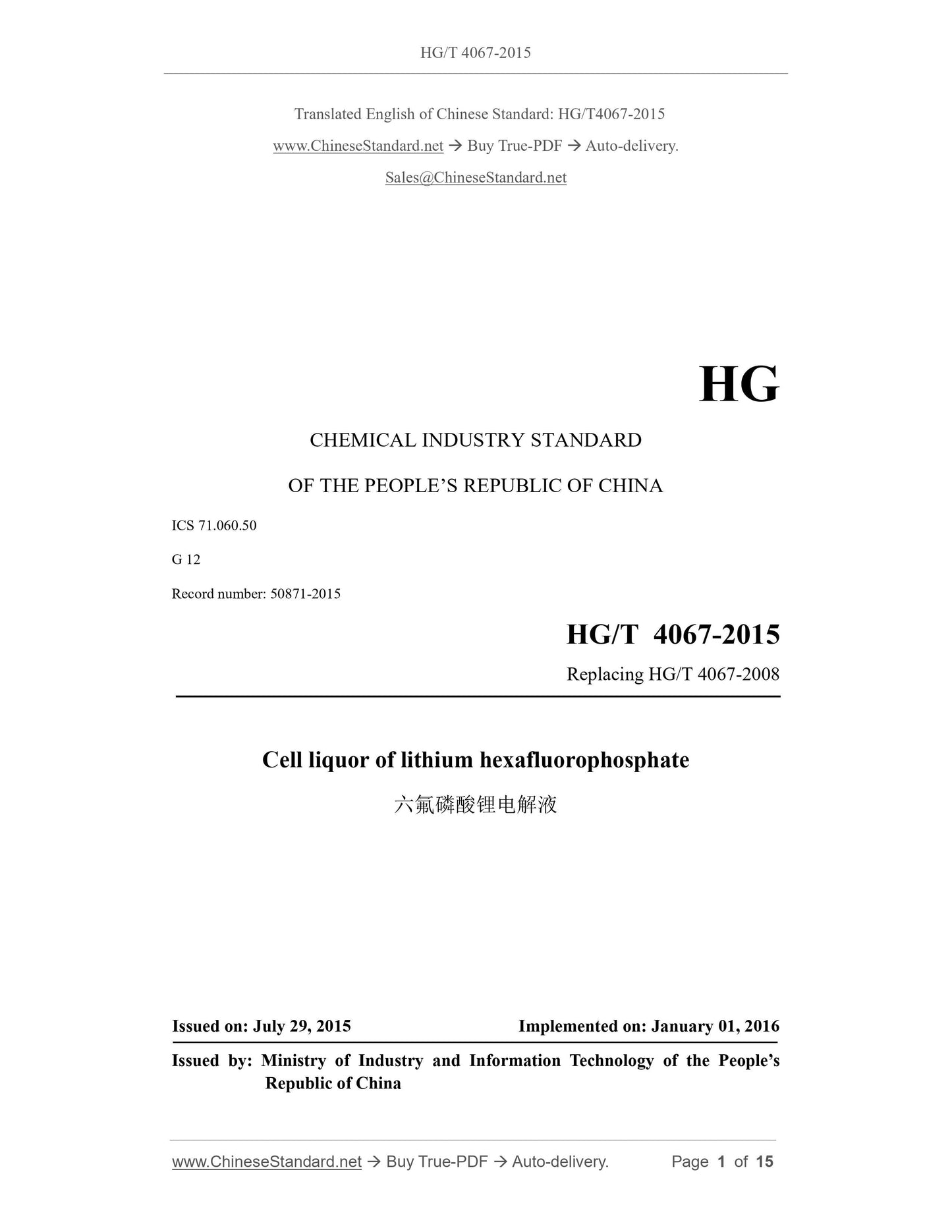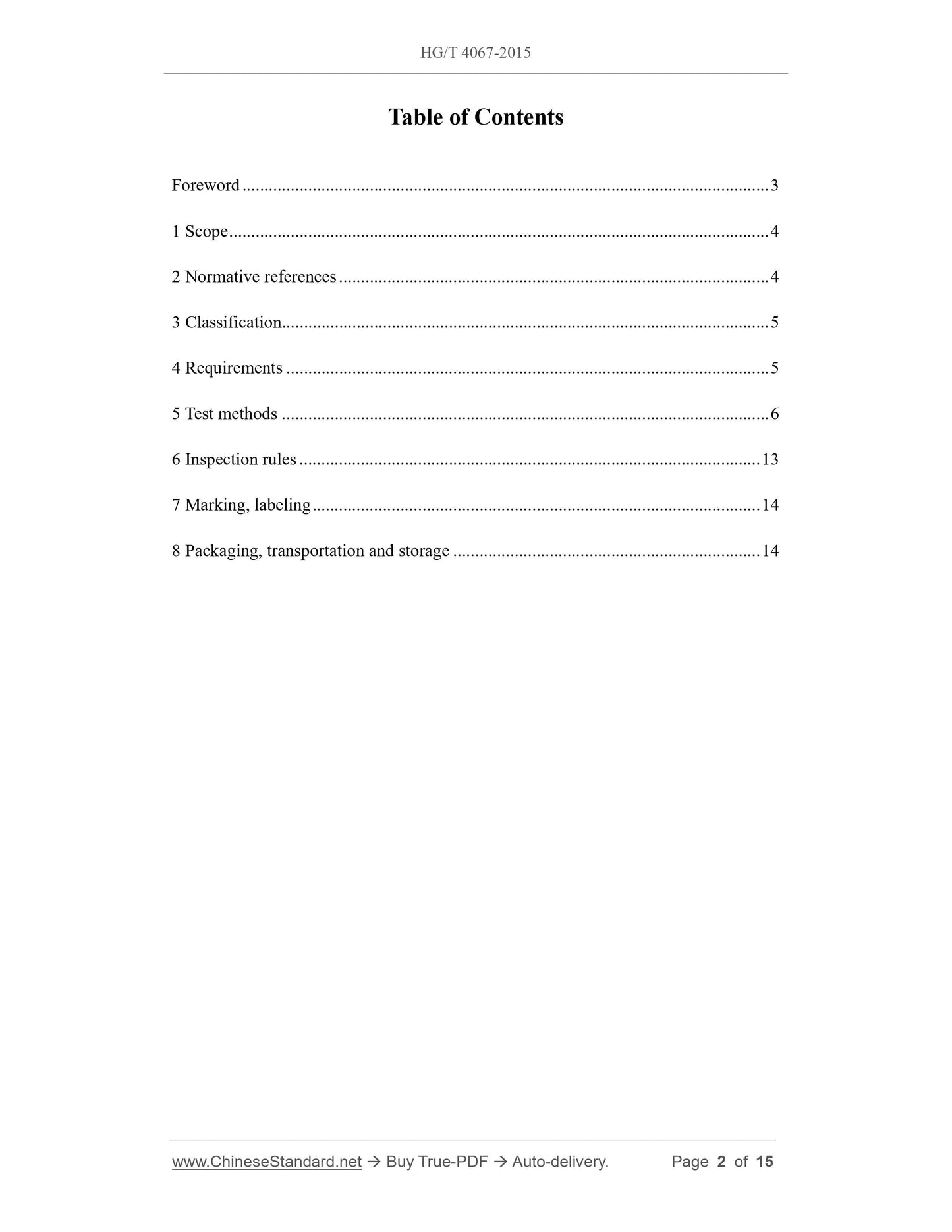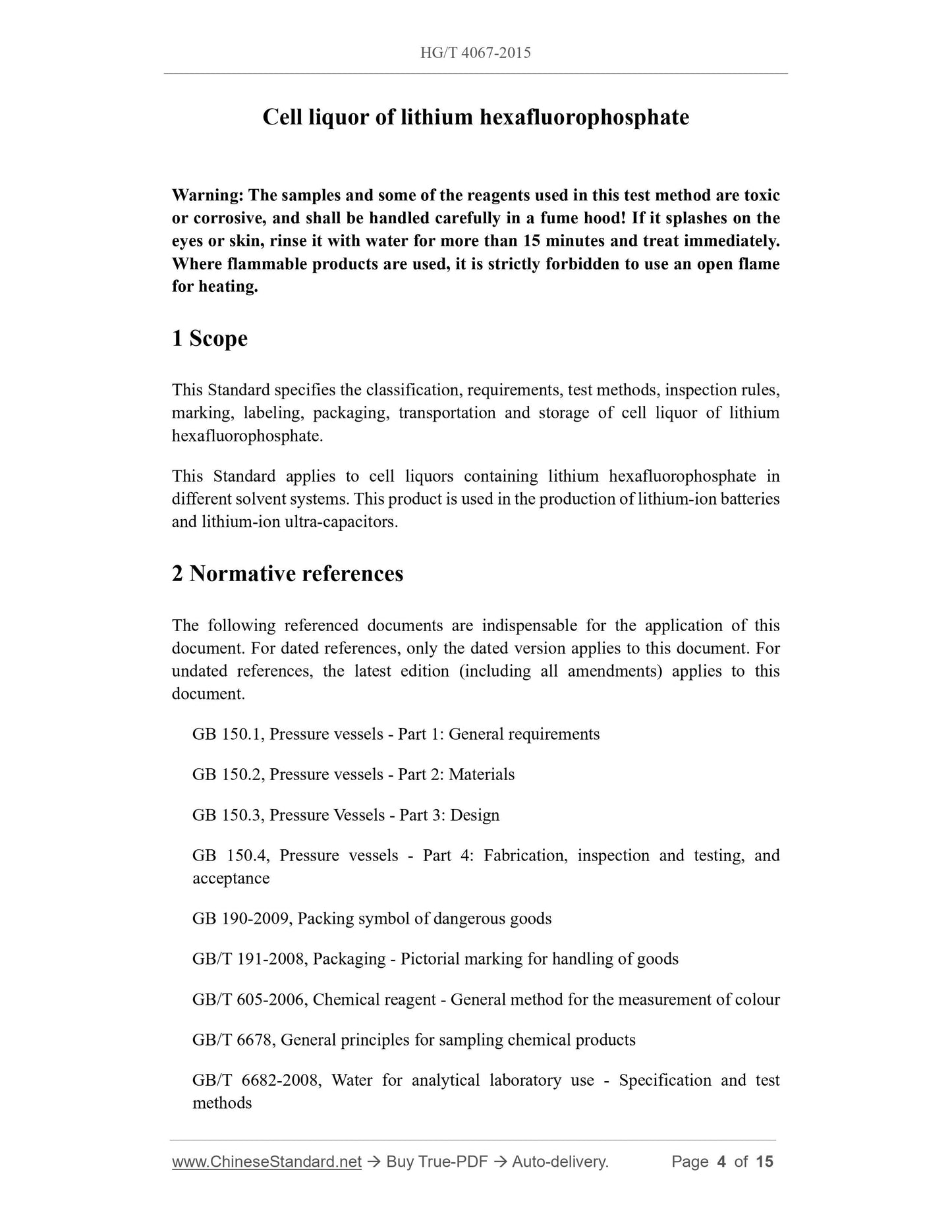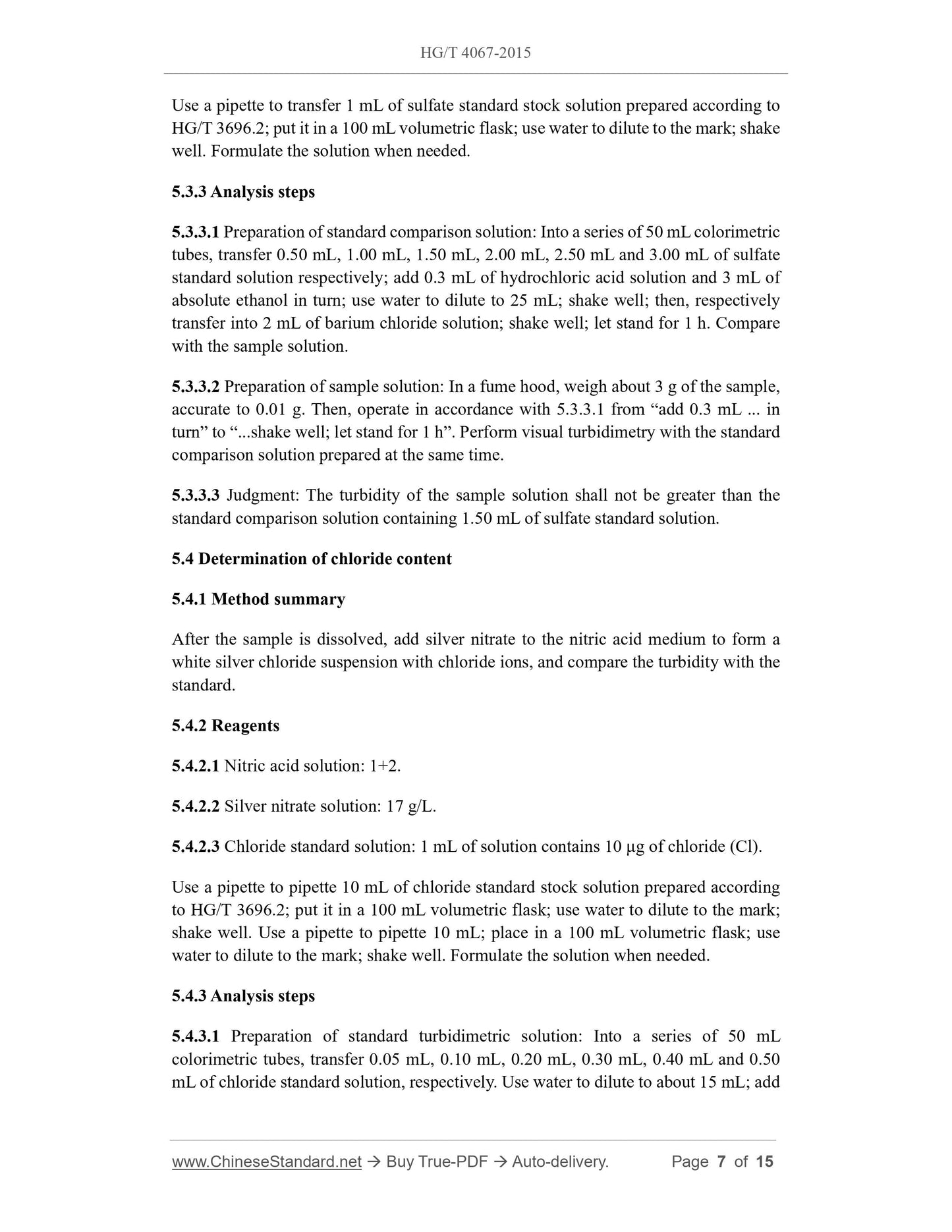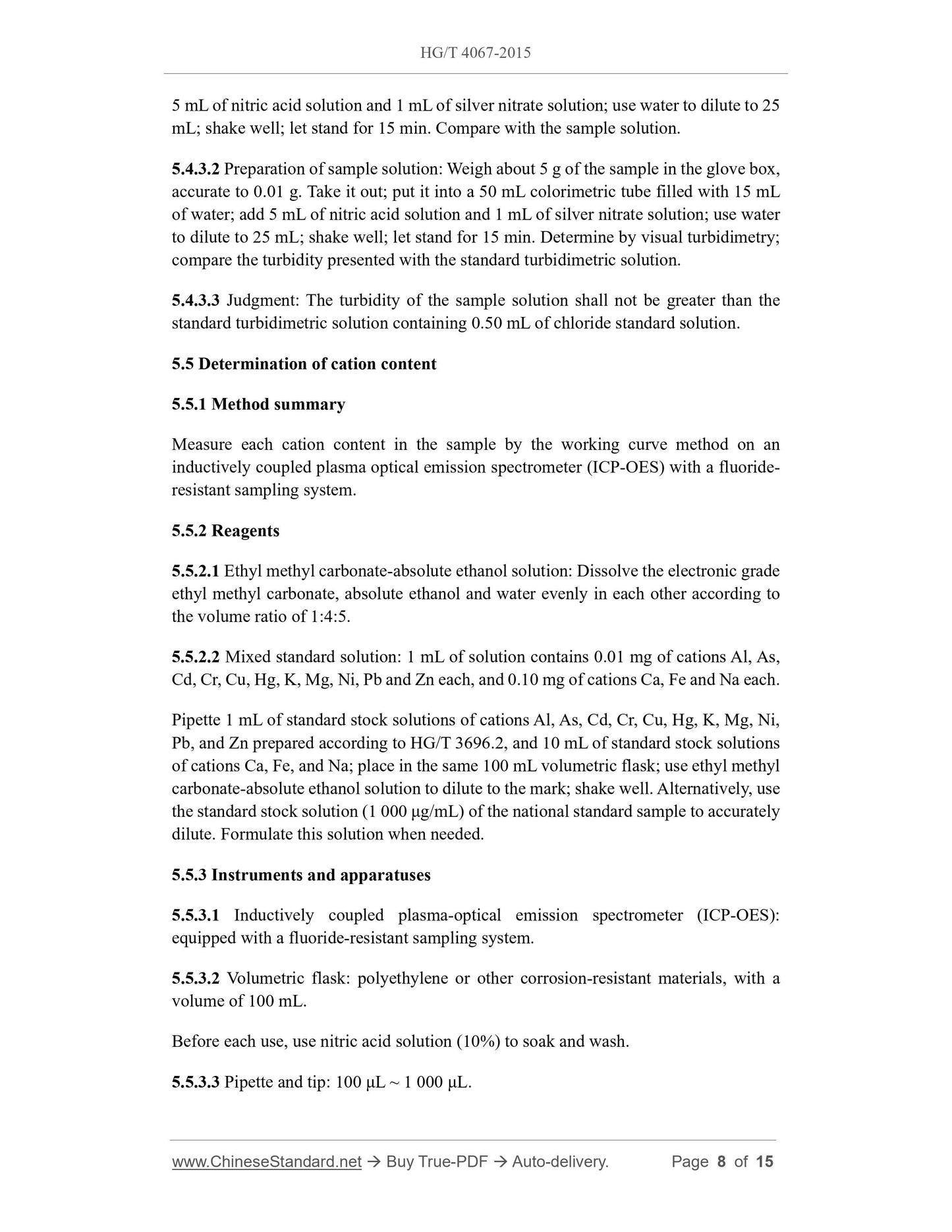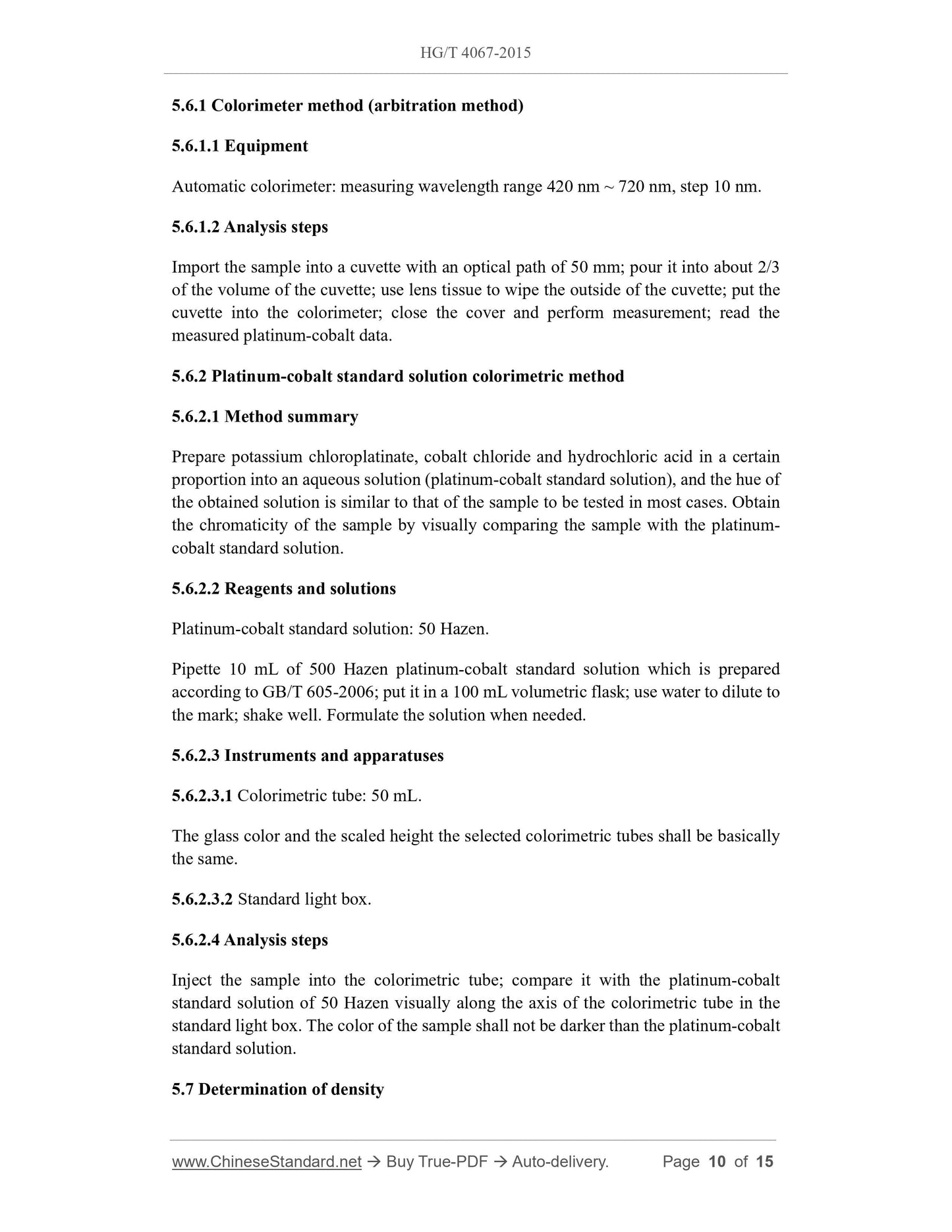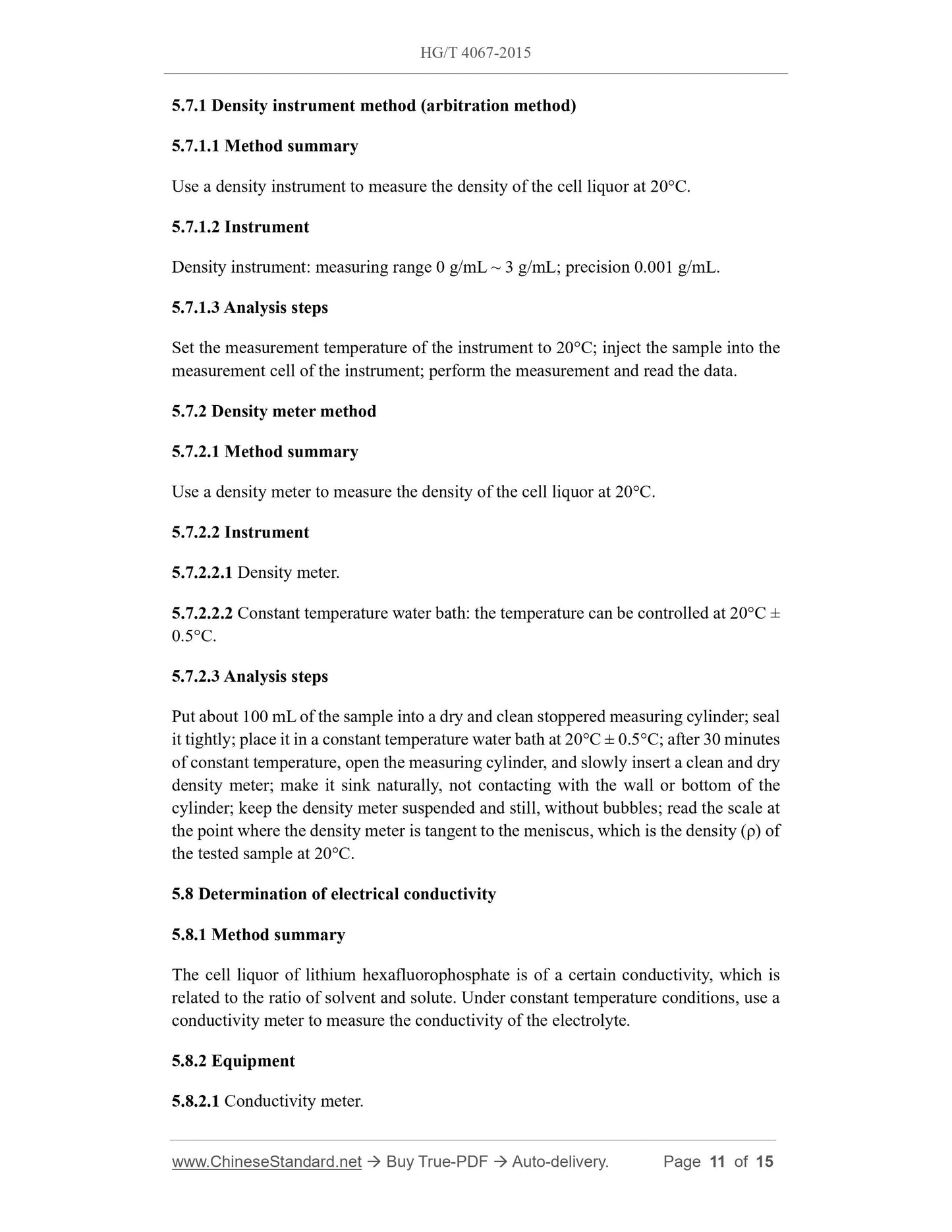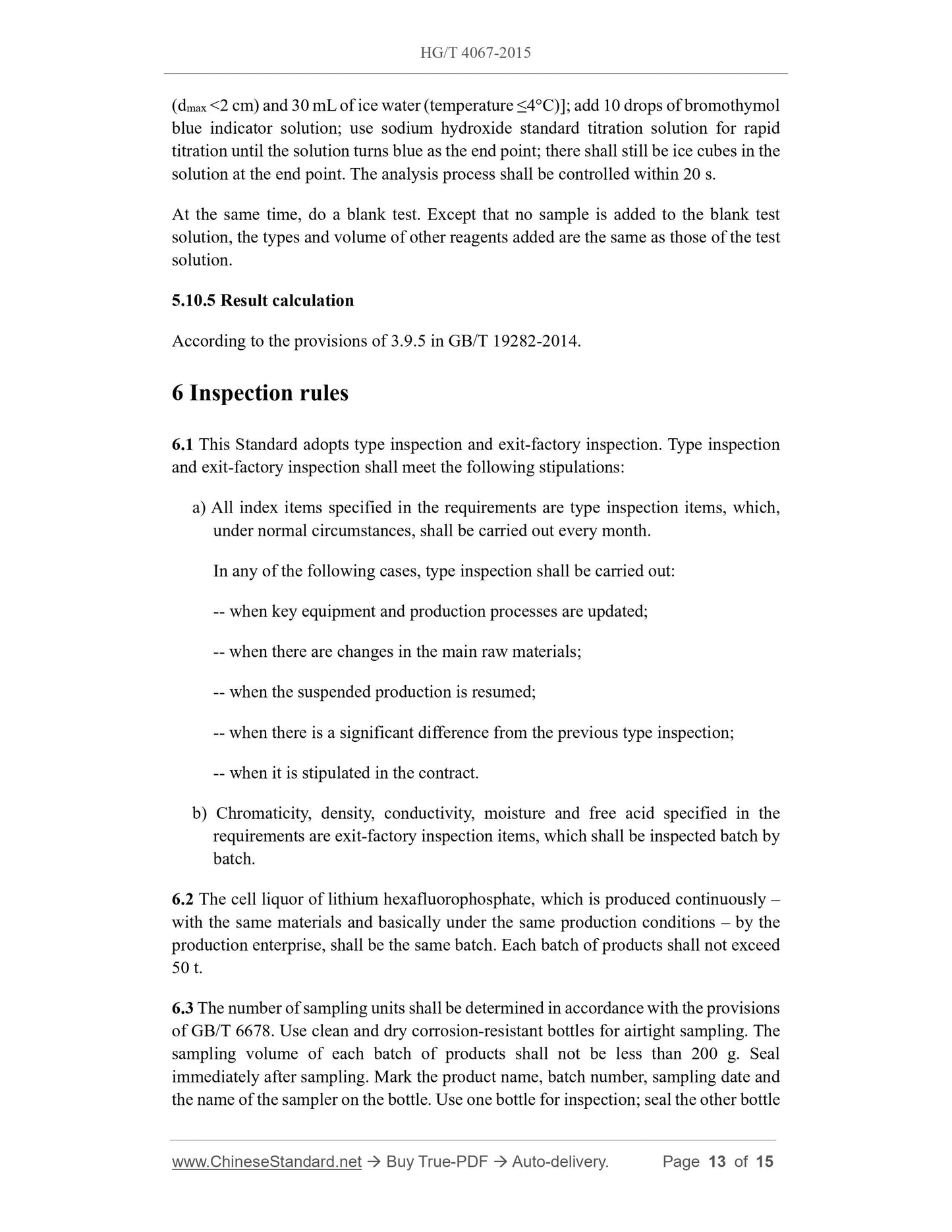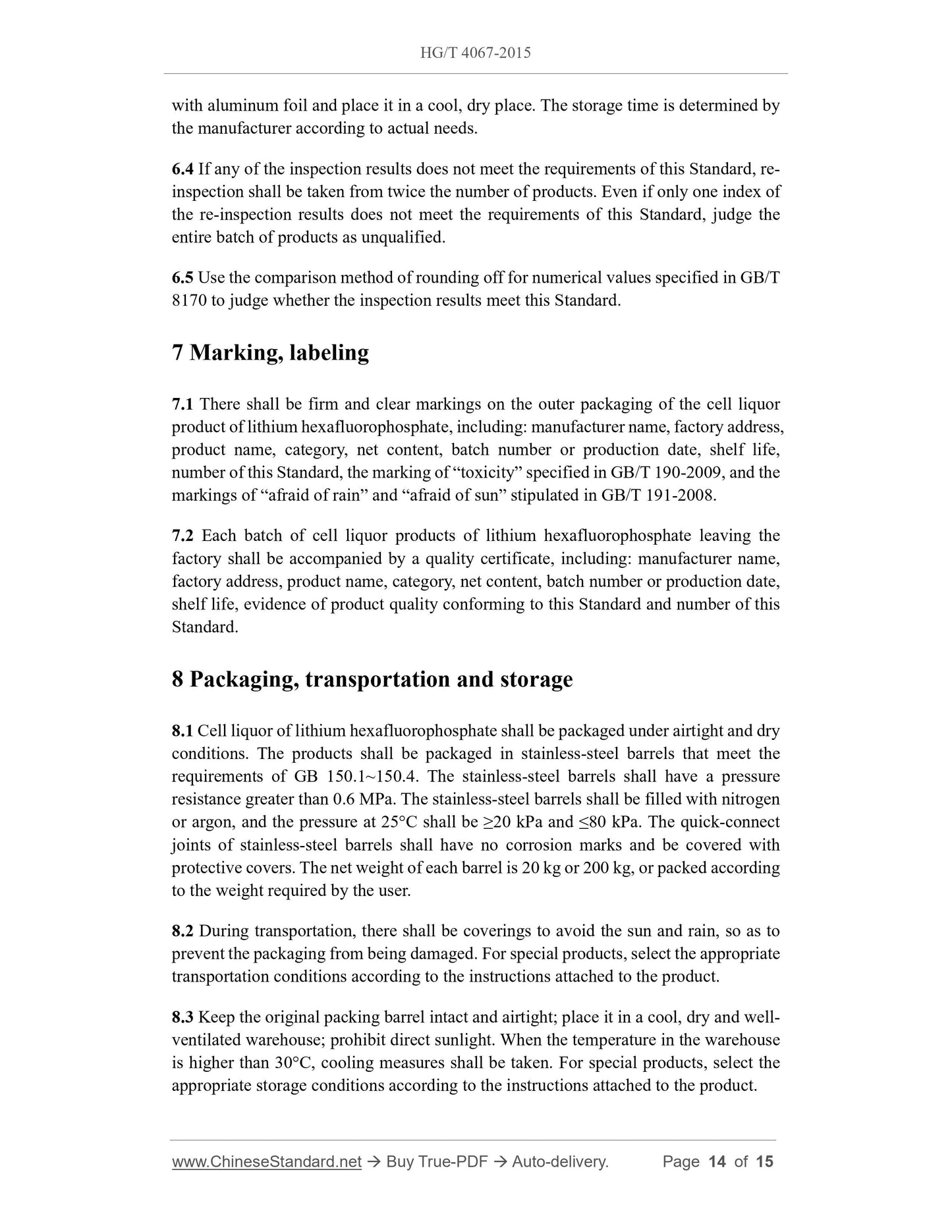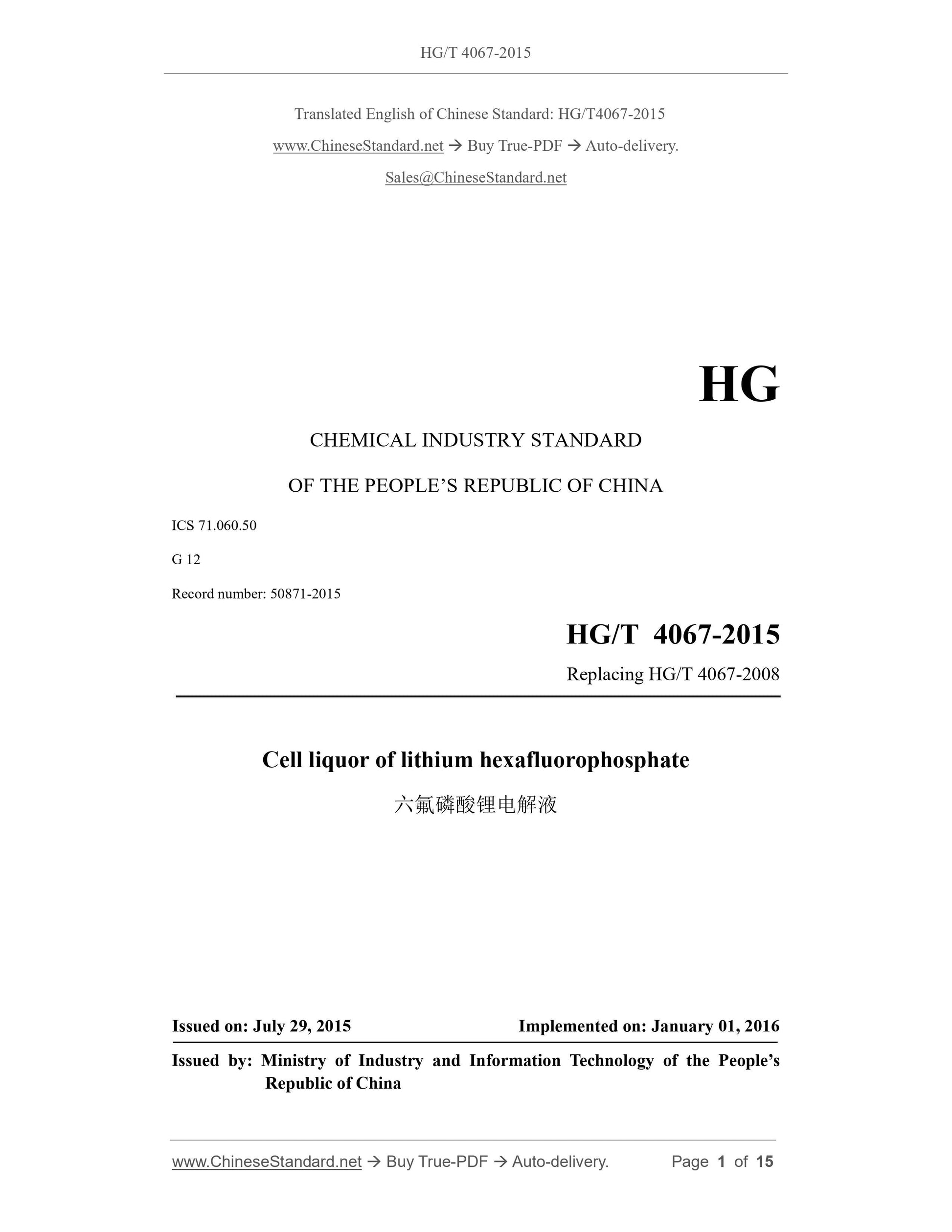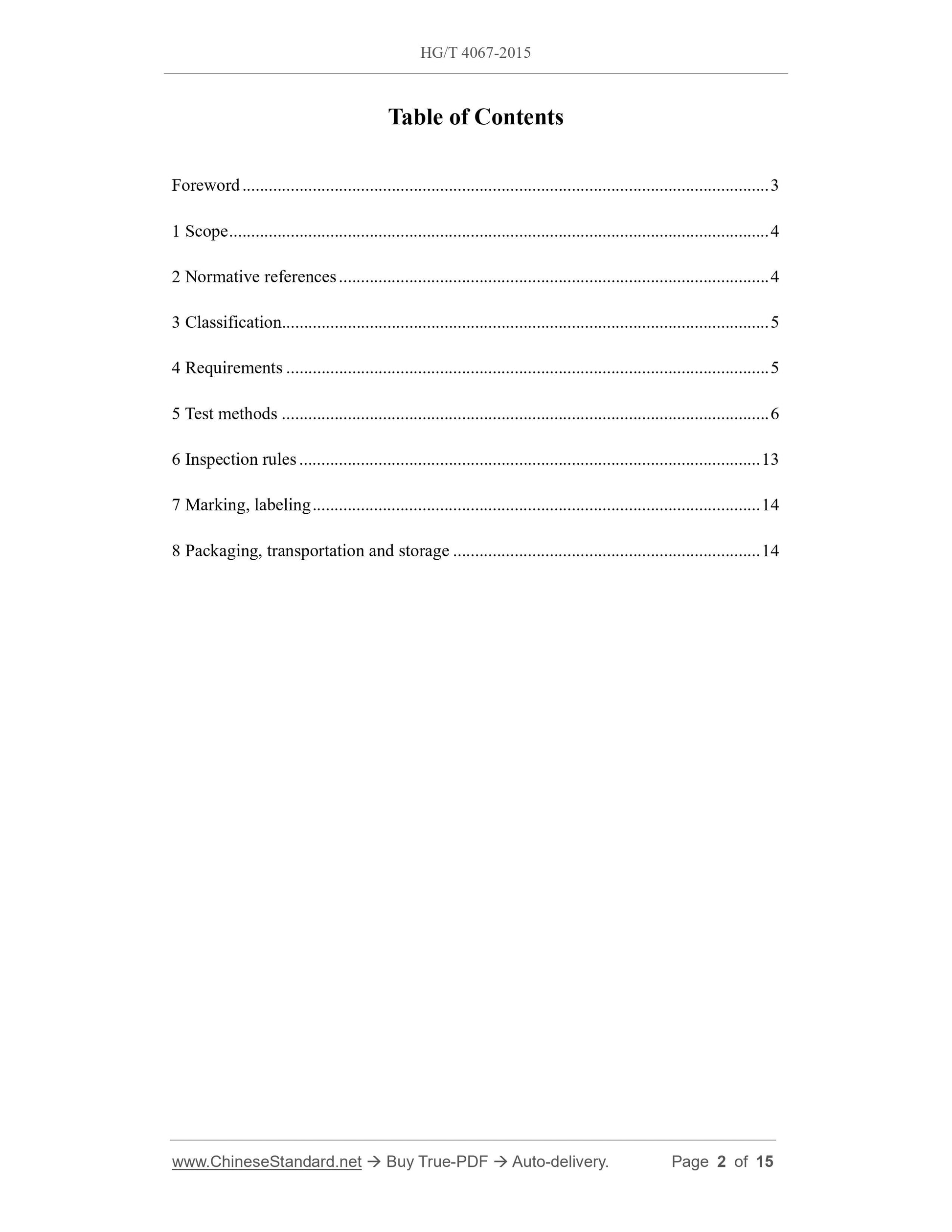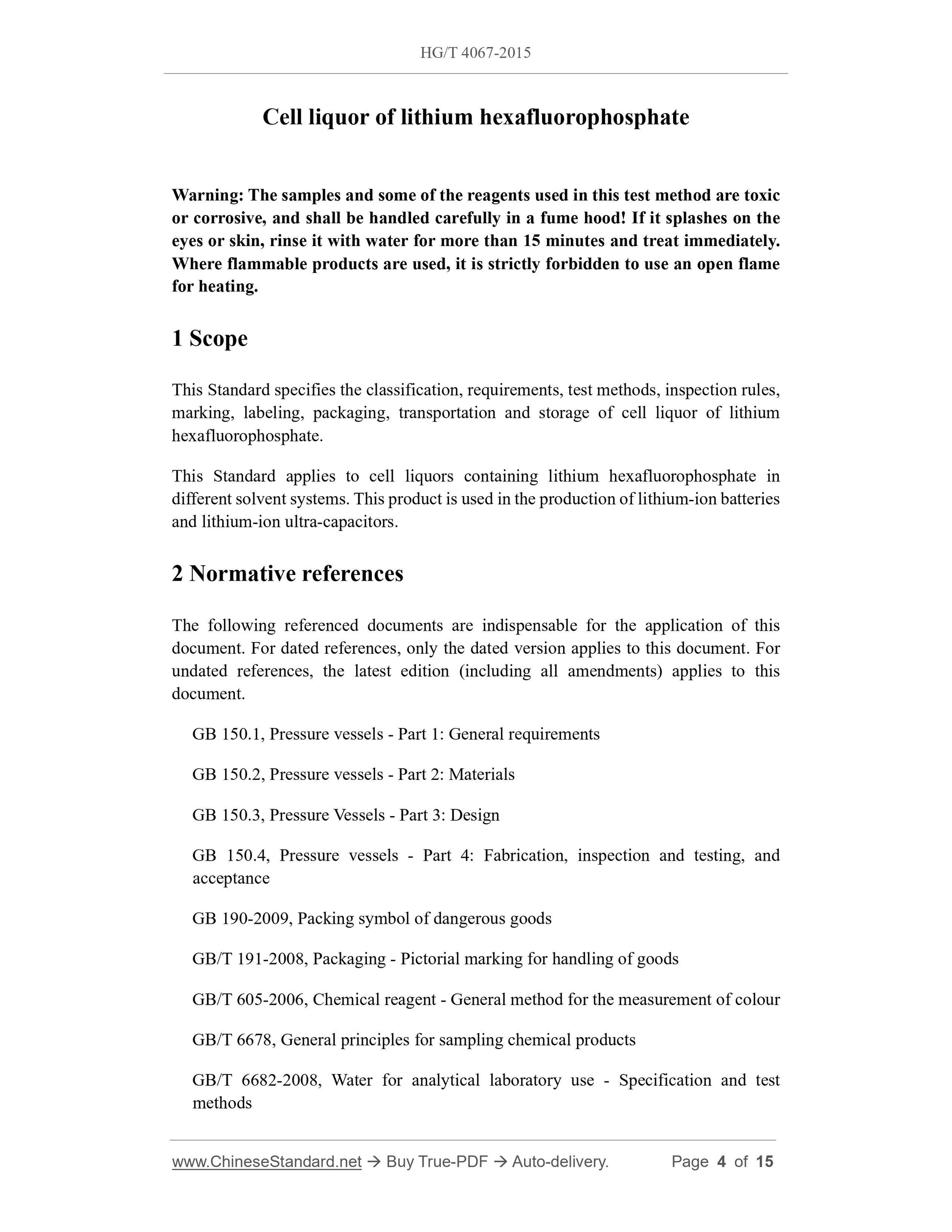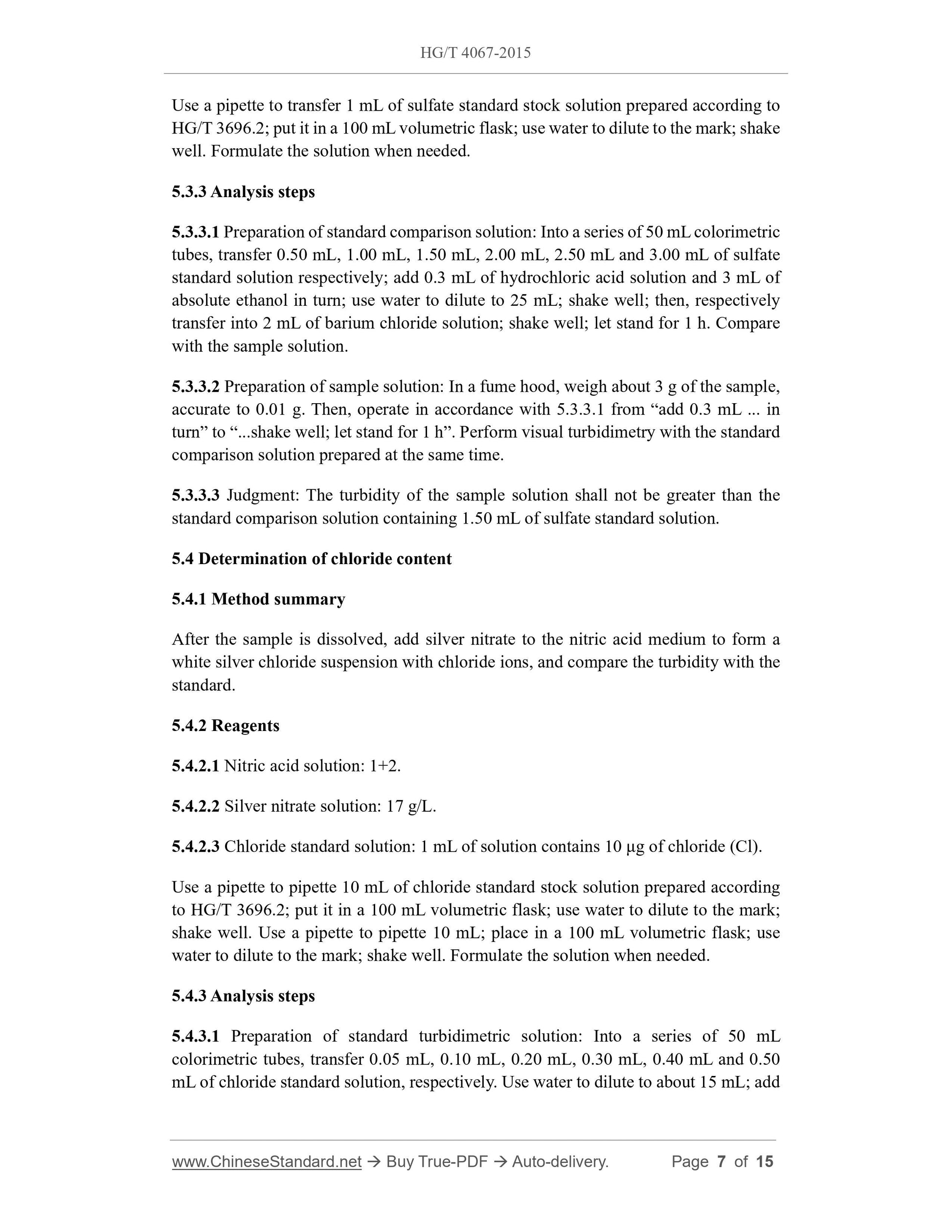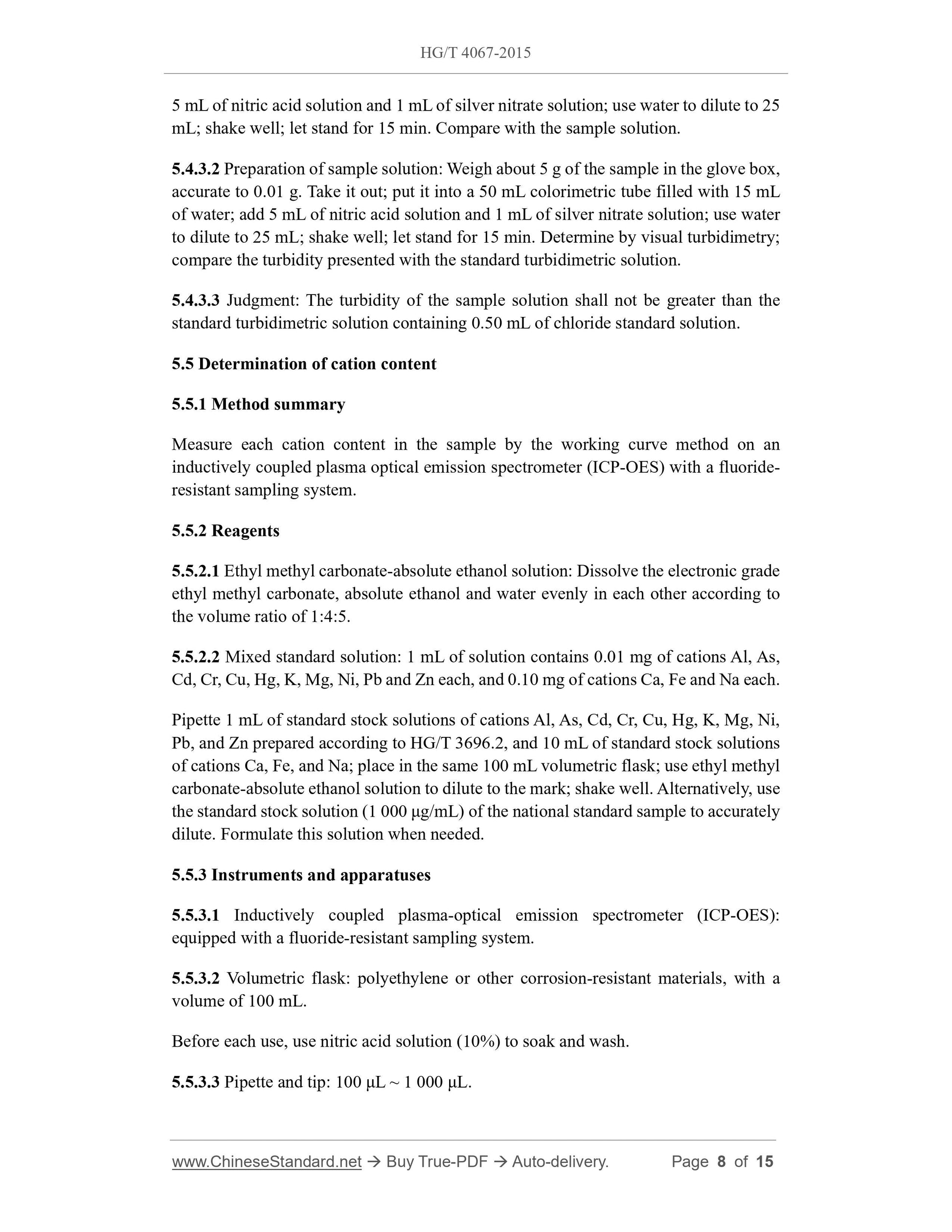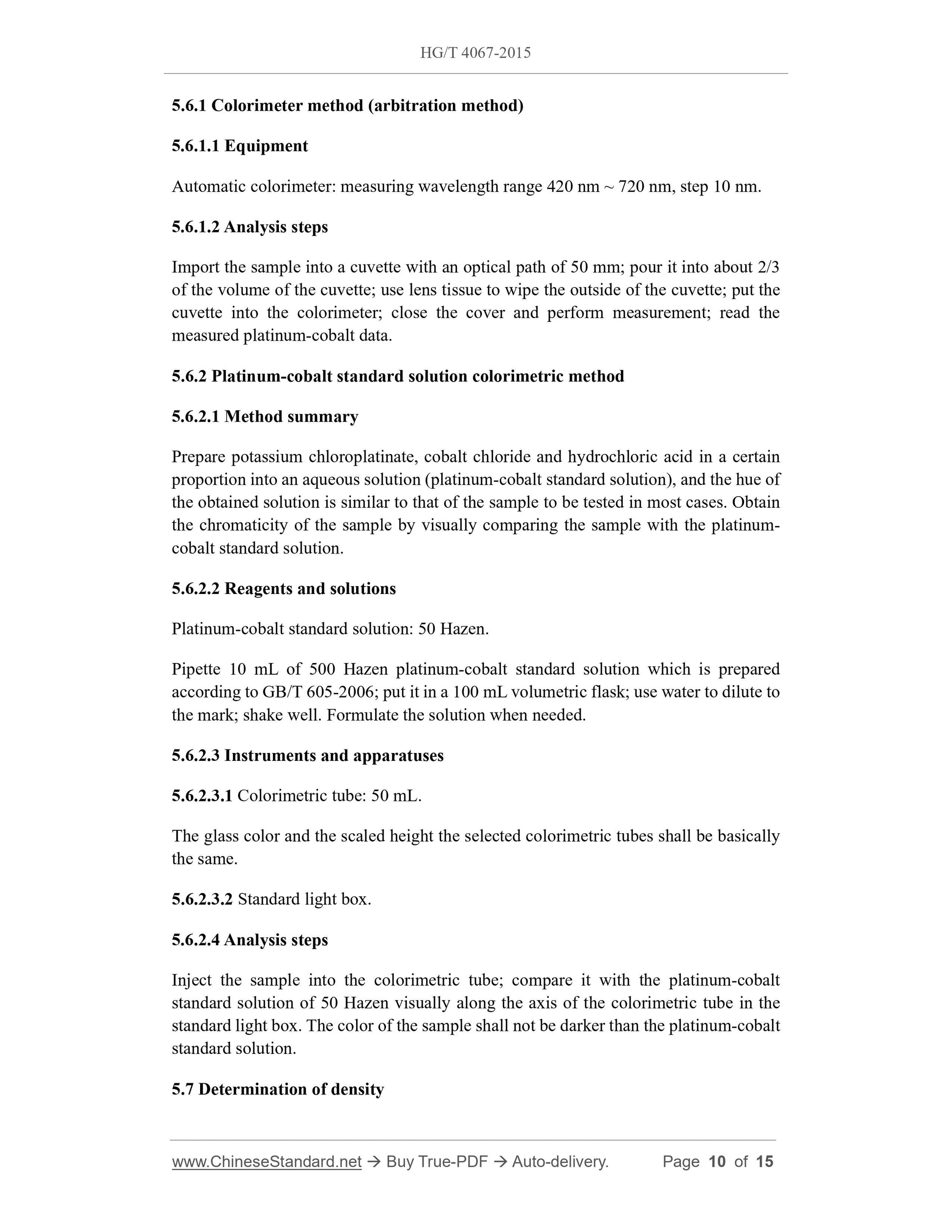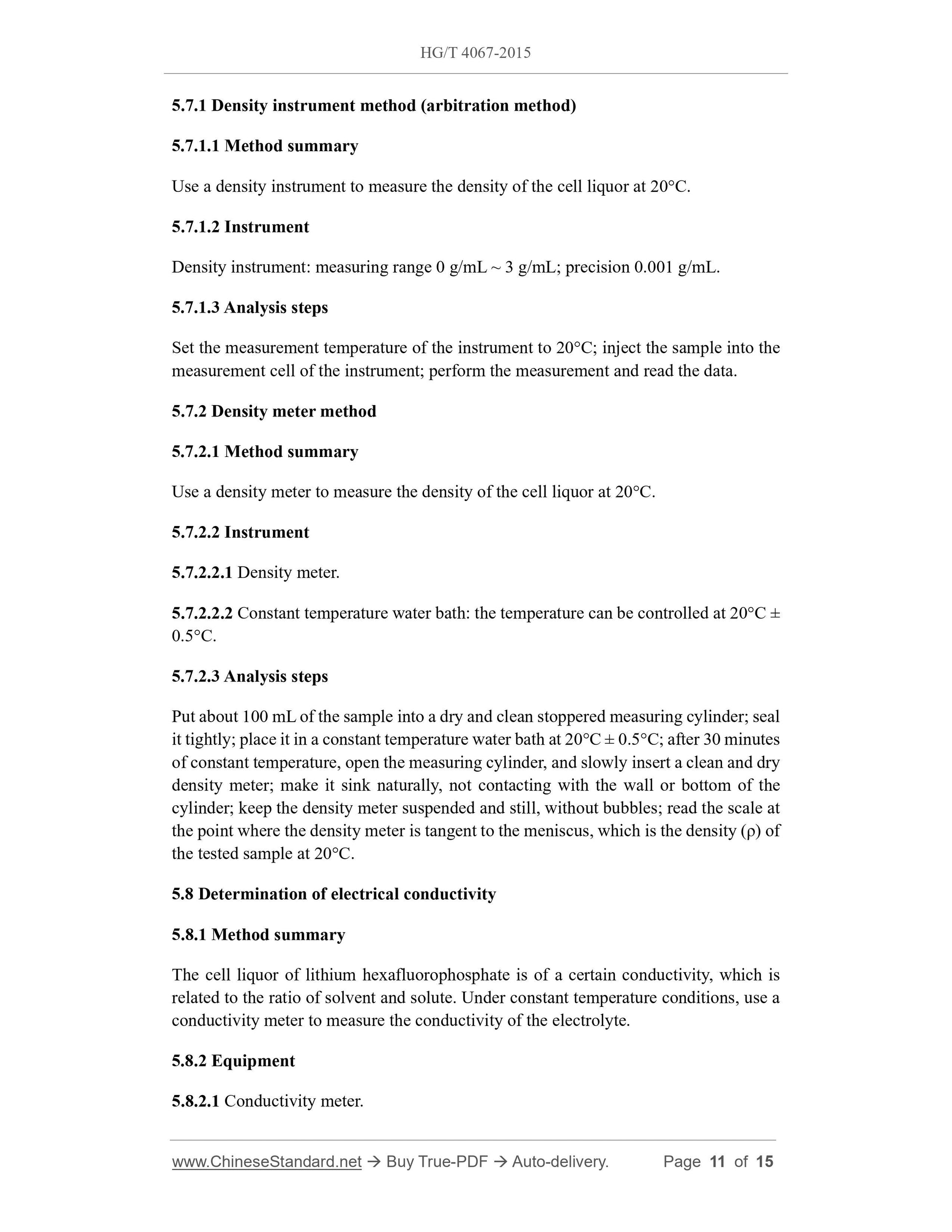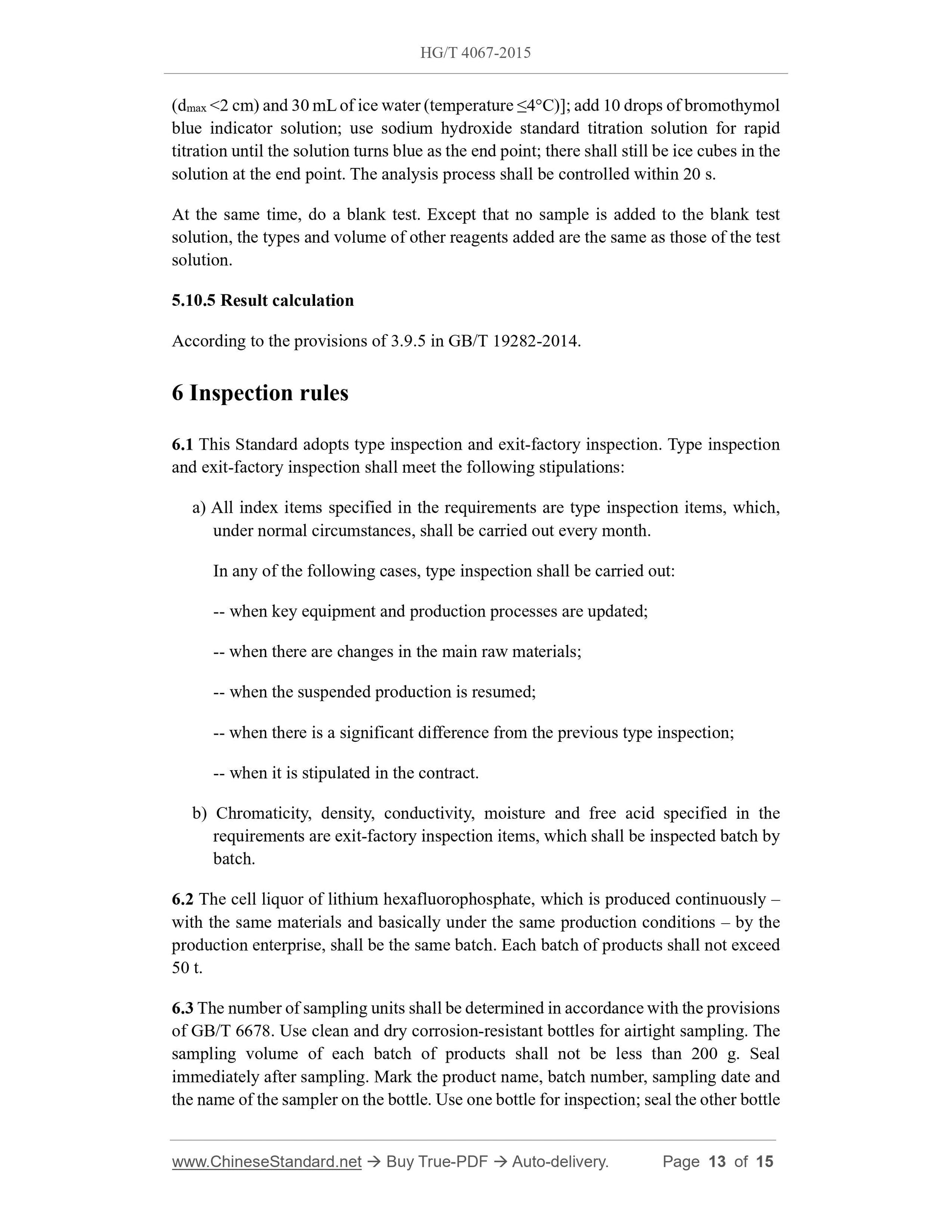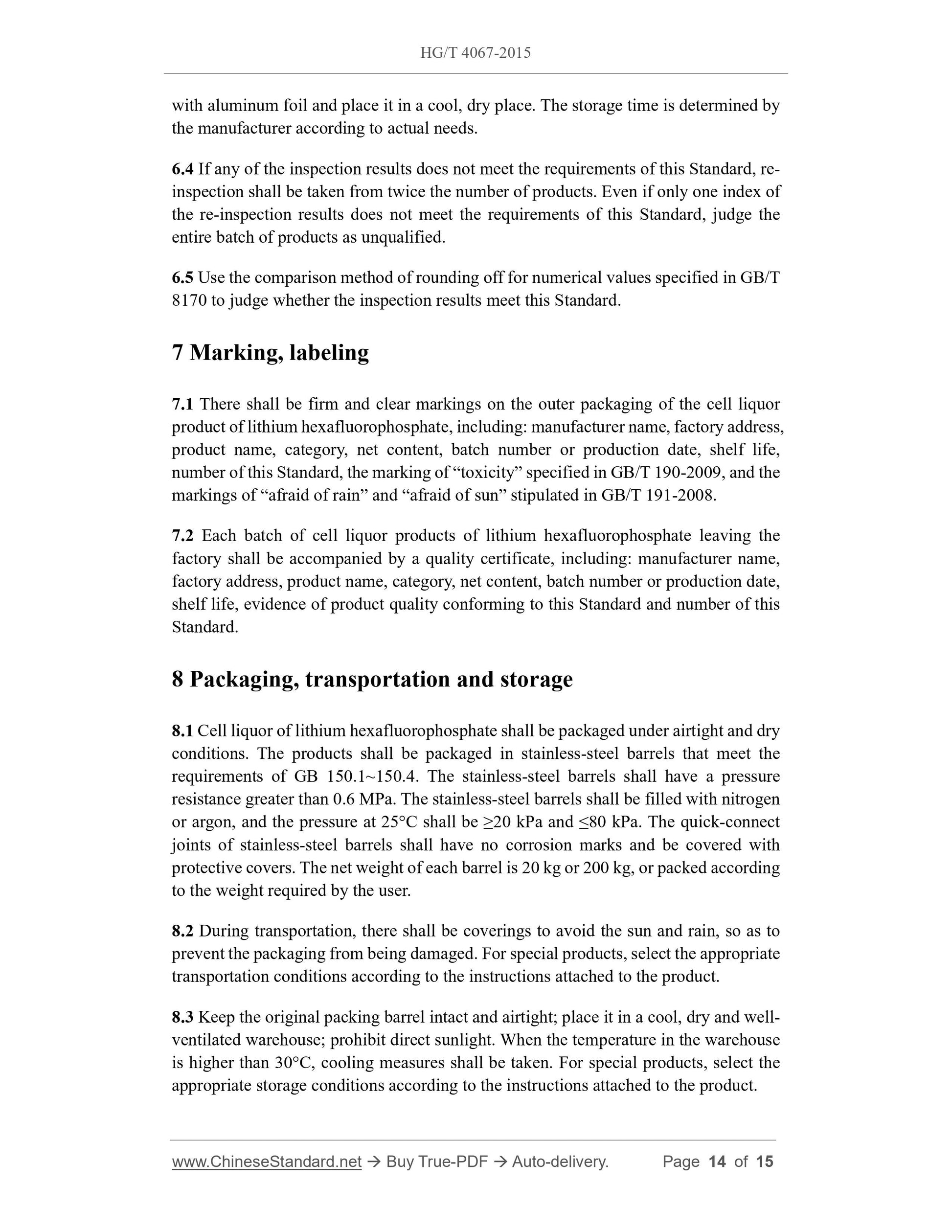1
/
of
9
www.ChineseStandard.us -- Field Test Asia Pte. Ltd.
HG/T 4067-2015 English PDF (HG/T4067-2015)
HG/T 4067-2015 English PDF (HG/T4067-2015)
Regular price
$115.00
Regular price
Sale price
$115.00
Unit price
/
per
Shipping calculated at checkout.
Couldn't load pickup availability
HG/T 4067-2015: Cell liquor of lithium hexafluorophosphate
Delivery: 9 seconds. Download (and Email) true-PDF + Invoice.Get Quotation: Click HG/T 4067-2015 (Self-service in 1-minute)
Newer / historical versions: HG/T 4067-2015
Preview True-PDF
Scope
This Standard specifies the classification, requirements, test methods, inspection rules,marking, labeling, packaging, transportation and storage of cell liquor of lithium
hexafluorophosphate.
This Standard applies to cell liquors containing lithium hexafluorophosphate in
different solvent systems. This product is used in the production of lithium-ion batteries
and lithium-ion ultra-capacitors.
Basic Data
| Standard ID | HG/T 4067-2015 (HG/T4067-2015) |
| Description (Translated English) | Cell liquor of lithium hexafluorophosphate |
| Sector / Industry | Chemical Industry Standard (Recommended) |
| Classification of Chinese Standard | G12 |
| Classification of International Standard | 71.060.50 |
| Word Count Estimation | 9,963 |
| Date of Issue | 2015-07-14 |
| Date of Implementation | 2016-01-01 |
| Older Standard (superseded by this standard) | HG/T 4067-2008 |
| Quoted Standard | GB 150.1; GB 150.2; GB 150.3; GB 150.4; GB 190-2009; GB/T 191-2008; GB/T 605-2006; GB/T 6678; GB/T 6682-2008; GB/T 8170; GB/T 19282-2014; HG/T 3696.1; HG/T 3696.2; HG/T 3696.3 |
| Regulation (derived from) | PRC MIIT Announcement (2015 No.49) |
| Issuing agency(ies) | Ministry of Industry and Information Technology |
| Summary | This standard specifies the classification, requirements, test methods, inspection rules, marking, labeling, packaging, transportation and storage of lithium hexafluorophosphate electrolytes. This standard applies to different solvent systems containing lithium hexafluorophosphate electrolyte. The product is used for lithium-ion battery, lithium-ion supercapacitor production. |
Share
